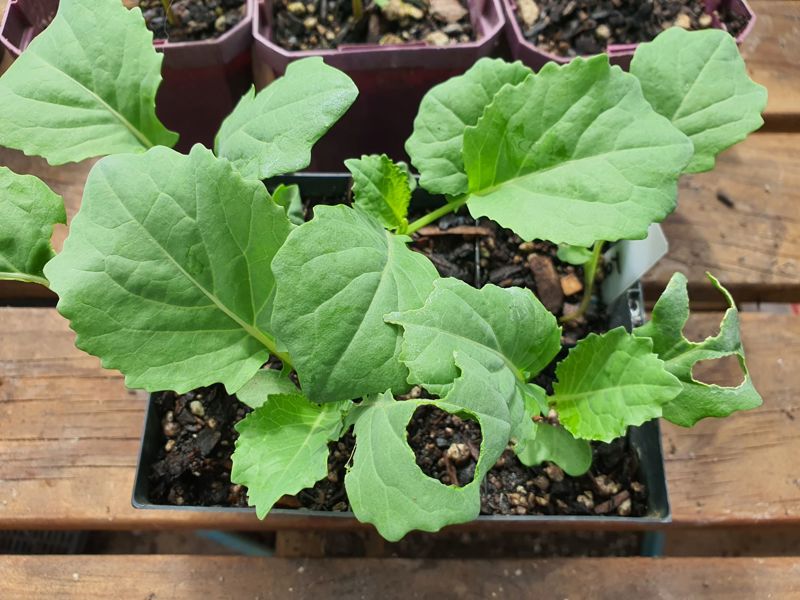While it is nice to grow things to eat, there are also other creatures out there who think the things you grow are nice to eat too. This can turn the garden into a battleground.
The first steps you can take to reduce the risk of pests is preventative.
Sickly plants are like a magnet to pests – they can sniff them out from a mile off. So make sure they are well watered and well fed. Giving them good spacing and keeping weeds down can improve vigour as plants aren’t competing for what they need. Planting them in the garden while it is still too cold can set them back and while they are sulking and finding inner strength to grow – the pests can circle…
Around the garden you can reduce the pest risk but having a bit of a clean up – removing likely hiding places for slugs and snails. Planting near the garden with plants that not only encourage the presence of beneficial insects but also plants deliberately planted lure pest away from the garden.
The next tool you should have in your arsenal is knowledge and observation. Do some research to find out who is likely to bother your garden and what they look like at all stages of growth – especially eggs and larvae so you can catch the problem before it really starts. Yates has a really good pest section >HERE< on the website.
Observation is very important. Know your garden and check on it daily – whether it is with a cup of coffee in your PJs first thing in the morning or after work with a glass of wine. The key is to become familiar with your plants, so you notice that first tomato but also, so you recognise when something is amiss. Early treatment of problems is a lot easier to deal with in the long run.
And lastly Treatment. It is important to use something that is targeted for the pest you have. My best advice here is to trust things that come in bottles over recipes found on the internet with dubious origins. These can almost be more toxic and damaging to the whole garden than things in bottles. And things in bottles have to do what they say by law. And things in bottles can suit a range of pests and gardening styles from the gentle organic solutions to the full on big guns for the most stubborn pests that leave you at wits end. You can check out all the Yates pest solutions >HERE<
When spraying anything - follow the directions – especially application rates and safety instructions. The Sprayfix I mentioned last Friday can also work with pesticides to ensure it sticks well to the leaves.
For populations that seem to explode overnight, it is a good idea to alternate between two different kinds of spray that target them but work in different ways, so they don’t get used to one treatment to the point it is no longer effective in your garden.
There is also exclusion – which can work extremely well, and the only downside is your garden is draped with nets and fine mesh cloths, and you don’t get to see the plants. But in times of trouble, you need to do what you need to do to get a harvest.
In my garden, in genuine use of Yates products – today I am considering laying some Blitzem slug bait in the greenhouse as I have noticed some nibbles. I fully submerged the victims and their neighbours hoping to drown the little bug-ger. But to make sure I will carefully lay down some little blue pellets. They used to be my go to for protection in the garden until we got Jasper the Dog and now, I’m very slow to reach for them - especially as he likes to lick the blood and bone off the soil. But up on the shelf in the greenhouse will be safe and this is a battle I will win.
I hope all this helps.
Happy gardening and as always – if you want to get in touch leave a comment below.
Sarah the Gardener : o)










Share
Share this blog on social media